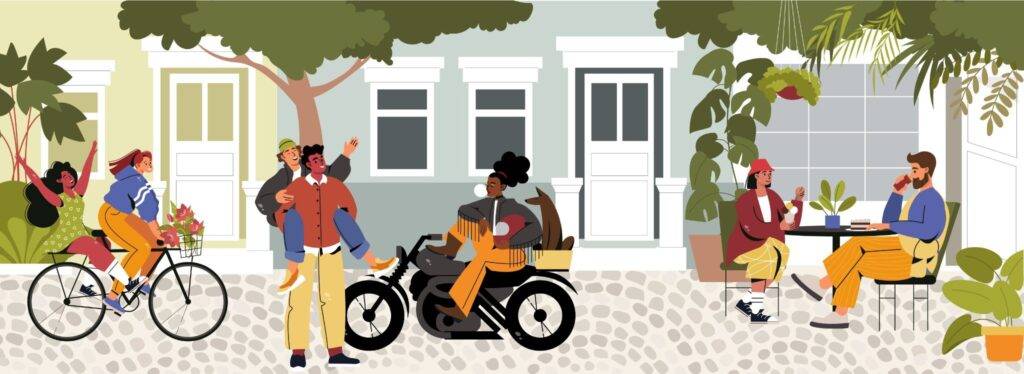
At Link Street, we believe real estate is more than a transaction—it’s a tool for transformation. Whether repositioning an urban corridor or activating a historic main street, we create places that deliver enduring value for communities and investors alike.

Investment is Shifting—And Opportunity Is Following
In recent years, institutional and private capital has shifted from traditional downtown business districts toward secondary and tertiary towns, where historic mixed-use corridors are gaining new momentum.
This shift is driven by key macro trends:
– Remote and hybrid work have decentralized the workforce and distributed economic activity into smaller cities, towns, and walkable neighborhoods.
– Zoom towns and lifestyle-driven markets are experiencing population growth, rising rents, and strong demand for services—all of which support higher real estate value.
– Overlapping generations are converging on the same neighborhoods, as millennials seek safe but stimulating environments for their growing families, and boomers seek a lifestyle centers where they can relish their retirement years while remaining active.
– Main streets and historic mixed-use corridors now represent a sweet spot for investors: authentic, experience-driven, resilient to economic volatility, and still cost-efficient to enter

The Appeal of Place and Authenticity
Main Streets offer something few urban megaprojects can replicate: character, history, and human scale. Their mix of historic architecture, active storefronts, and walkable design creates emotional connection and economic performance.
Research from Main Street America and the Urban Land Institute (ULI) shows that districts rooted in authenticity consistently outperform on:
– Foot traffic and pedestrian engagement
– Tenant retention and lease stability
– Community support and local loyalty
At Link Street, we target these environments because we understand the compounding value of place. A great street is more than a backdrop—it’s a business model.
Commerce in the “Everywhere Office” Era
As more people work from home or on hybrid schedules, economic activity has migrated out of traditional downtowns and into neighborhoods and suburban centers. Local corridors are becoming new commercial hubs, with daily foot traffic from residents, families, and remote professionals.
This gives rise to renewed demand for the “third place”—a concept defined as the space beyond home (first place) and office (second place). These are cafés, libraries, plazas, parks—neutral, social gathering points where people build relationships, decompress, or work informally.
Smart development integrates these third places to:
– Foster a sense of belonging and community
– Support work-life flexibility and remote productivity
– Activate local retail ecosystems throughout the day
Link Street embraces this dynamic, weaving third places and public realm enhancements into our development and design strategy.
Capital Is Not Just Watching—It’s Investing
Small-town and secondary-market real estate isn’t just a feel-good story—it’s an increasingly compelling investment thesis. Blogs and analyst insights point to several major drivers:
– Lower acquisition costs and faster paths to ROI
– Higher rental yield due to tight supply and growing demand
– Less competition, streamlined permitting, and often public incentives
For investors, these factors reduce exposure and increase long-term returns—particularly in high-character, high-demand main street environments.
Link Street: Place-Driven, Strategy-Led
At Link Street, we turn this market momentum into performance through discipline, collaboration, and design excellence. Our approach is built on:
– Site-first thinking: We begin with place—because a strong site carries the real estate. Everything else builds from that foundation.
– Data-backed opportunity selection: We target markets where growth, demand, and authenticity converge.
– Community-aligned development: We work with local stakeholders to ensure each project respects the neighborhood while creating long-term upside.
– Integrated capital strategy: From public-private partnerships to thoughtful phasing and tax tools, we structure deals for both resilience and ROI.
Let’s Build What’s Next
The next wave of real estate growth won’t be driven by skyscrapers—it will be shaped by street corners, civic plazas, repurposed buildings, and highly livable corridors.
At Link Street, we’re leading that charge—one walkable, character-rich district at a time.
Connect with us to explore how we turn placemaking into performance—and investment into impact.
